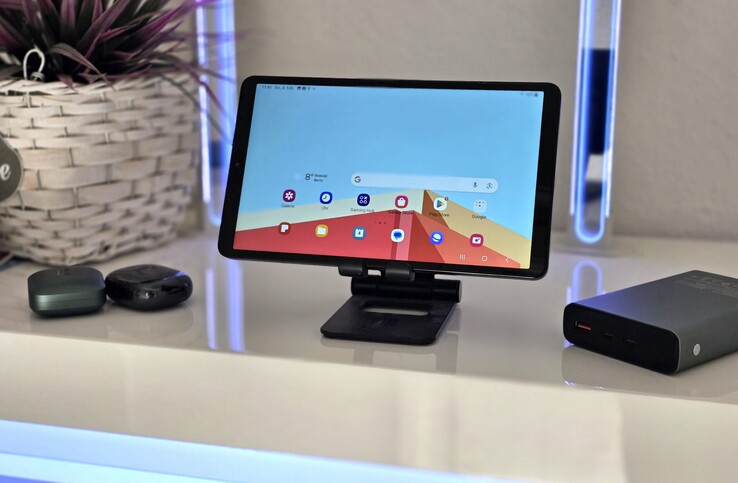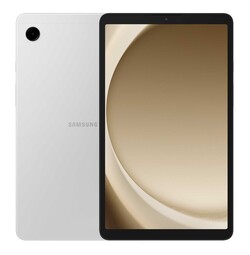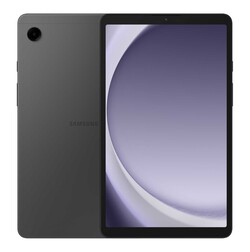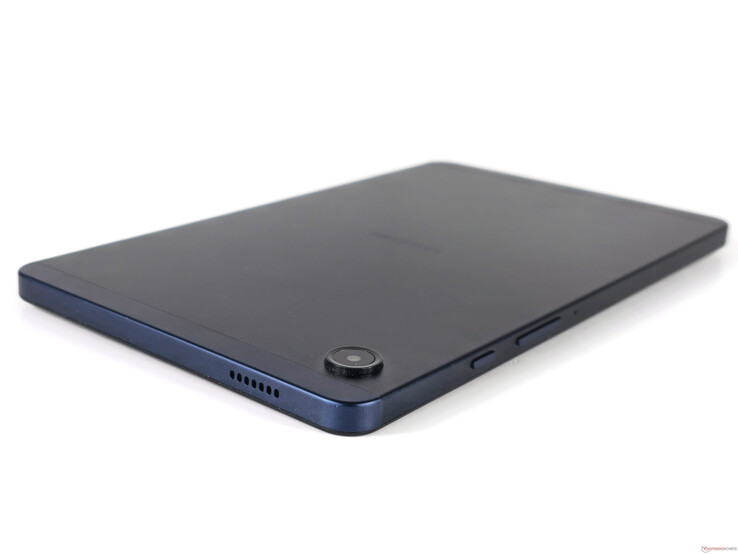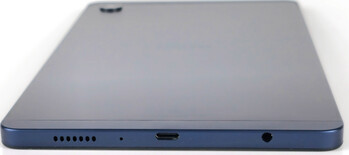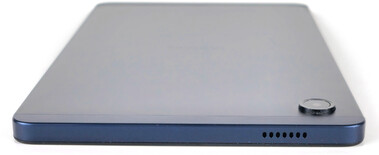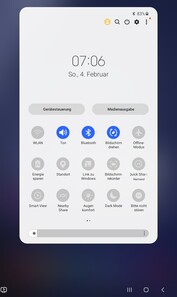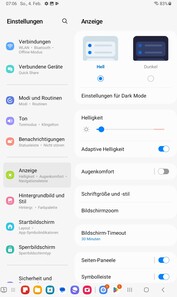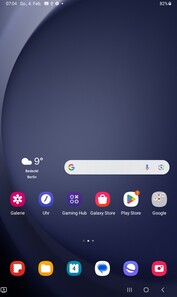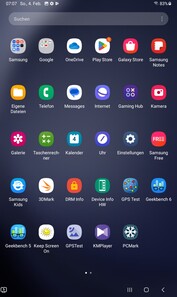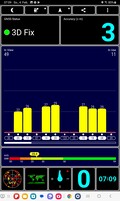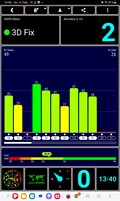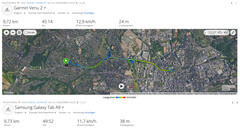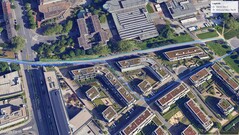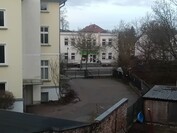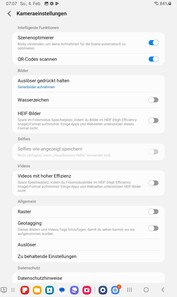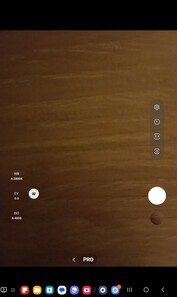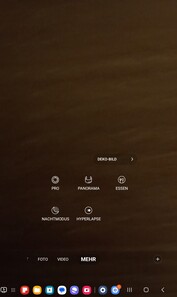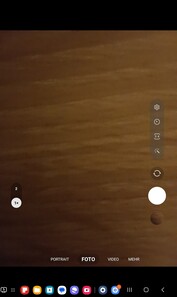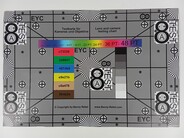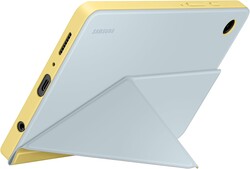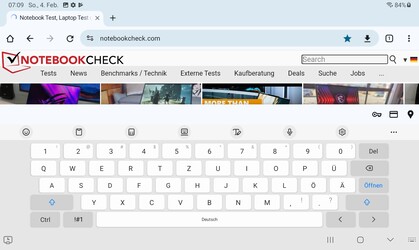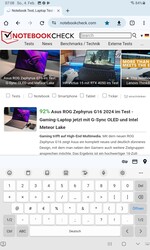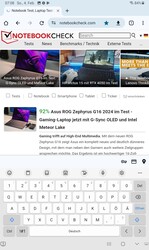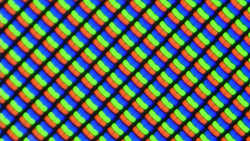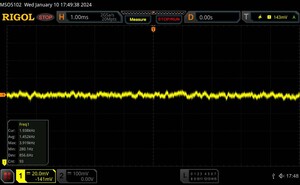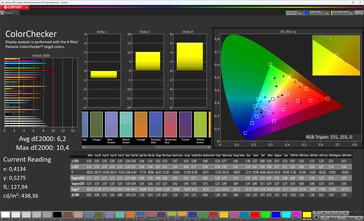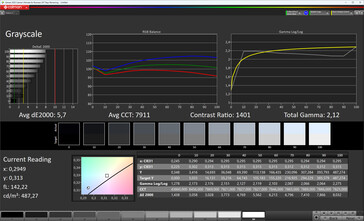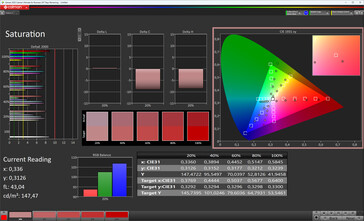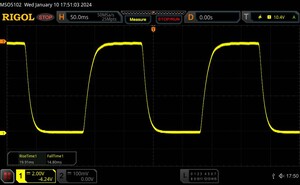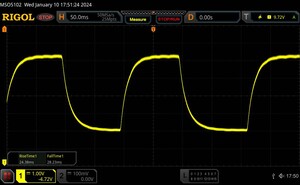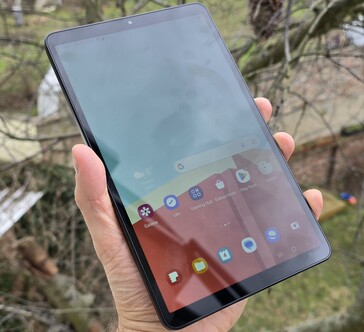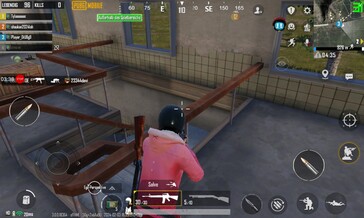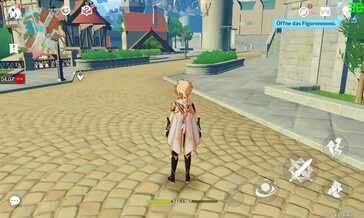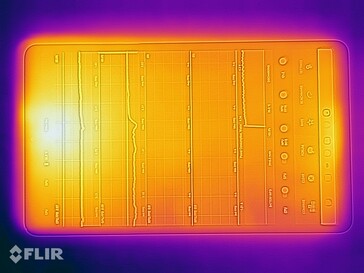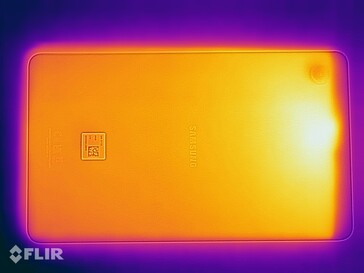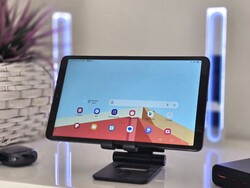Samsung Galaxy Tab A9 review - Wieldy entry-level tablet with GPS, LTE and 4 years of update
With the Tab A9, Samsung has revised its tablet lineup for consumers on a budget. The successor to the Tab A8 not only has become slightly smaller (8.7 inch diagonal screen size) but also carries a lighter price tag. The recommended retail price of the Galaxy Tab A9 starts at €179 (US$159), meaning the base configuration is around €50 (US$70) cheaper than its immediate predecessor. Tab A8 owners who don’t want to downsize can still look at the new Plus model for a 10.1-inch alternative in the Galaxy universe.
This time around, Samsung has also kept younger users in mind. The Tab A9 Kids Edition comes with a protective case and a stylus and features a modified One UI to simplify tablet use for children and help parents monitor their kids’ digital activities more easily. However, the Kids Edition is not yet available in Germany.
Comparison with possible competitors
Rating | Date | Model | Weight | Height | Size | Resolution | Price |
|---|---|---|---|---|---|---|---|
| 84.1 % v7 (old) | 02 / 2024 | Samsung Galaxy Tab A9 Helio G99, Mali-G57 MP2 | 332 g | 8 mm | 8.70" | 1340x800 | |
| 79.5 % v7 (old) | 05 / 2023 | Lenovo Tab M8 (Gen 4) Helio A22 MT6761, PowerVR GE8300 | 320 g | 9 mm | 8.00" | 1280x800 | |
| 82.2 % v7 (old) | 02 / 2023 | Nokia T10 T7200 (T606), Mali-G57 MP1 | 375 g | 9 mm | 8.00" | 1280x800 | |
| 80.4 % v7 (old) | 01 / 2023 | Amazon Fire HD 8 2022 MT8169A, Mali-G52 MP2 | 337 g | 9.7 mm | 8.00" | 1280x800 | |
| 81 % v7 (old) | 02 / 2022 | Samsung Galaxy Tab A8 2022 T618, Mali-G52 MP2 | 508 g | 6.9 mm | 10.50" | 1920x1200 |
Case - Samsung tablet with metal body
In terms of aesthetic, the similarity between the Galaxy Tab A9 and its predecessors is unmistakeable. The design strongly resembles a Galaxy Tab A7 Lite or Tab A8 with a modified camera module on the back. That said, the bezels around the 8.7-inch TFT panel have slimmed down considerably. The 81.7% screen-to-body ratio is appealing for a device in this price bracket and is much more efficient than what's found on a Nokia T10 (72.4%), for example.
Though the Galaxy Tab A9 is highly affordable, no sacrifice had to be made in the feel of the device thanks to its slim metal chassis. The Samsung tablet is also nice and light at just 332 g (0.71 lb), allowing you to hold it in one hand effortlessly. The chassis is available in three colourways (Graphite, Silver and Navy). Owing to the matt surface, fingerprints aren’t a huge problem, but they are still clearly visible.
The Galaxy Tab A9 has impressive workmanship. Moreover, the compact dimensions make the device feel sturdy and stiff.
Specifications - Samsung Galaxy Tab A9 with 3.5 mm audio jack
As far as specs go, the Galaxy Tab A9 definitely offers interesting features for mobile use. The device comes with a 3.5 mm audio jack, Bluetooth 5.3 and a 4G dual SIM option including eSIM support. There are a total of four models available:
Galaxy Tab A9 Wifi | 64 GB | 4 GB RAM | €179.00
Galaxy Tab A9 LTE | 64 GB | 4 GB RAM | €219.00
Galaxy Tab A9 Wifi | 128 GB | 8 GB RAM | €229.00
Galaxy Tab A9 LTE | 128 GB | 8 GB RAM | €269.00
Our Wi-Fi-only variant has 64 GB of internal storage. But after subtracting the space used for the operating system, only about 43 GB of usable storage is available. If you need more space for videos or photos, you can make use of accessories (e.g. thumb drives) via USB OTG or insert a microSD card into the hybrid slot. An external storage device can be used to store media files (videos or music) but not applications.
As you might expect, Samsung has only given the Galaxy Tab 9 a sluggish USB 2.0 port that doesn’t allow for high data transfer speeds or video output via a cable. During our copy test performed with a M.2 SSD drive (Samsung 980 Pro), transfer speed was around 29 MB/s. The device supports exFAT as well as NTFS (preferred by Microsoft systems). However, the latter can only be used for read operations.
microSD card reader
The Tab A9’s storage capacity can be expanded to up to 1 TB using micro SD cards in conjunction with exFAT support. The exFAT file format lets you save files larger than 4 GB on the storage media.
During our JPEG copy test, the tablet achieved highly satisfactory transfer rates with our reference card, though the Galaxy tablet didn’t quite take full advantage of the potential of the Angelbird AV Pro 60. The Tab A9 likewise had a great showing in Cross Platform Disk Test.
| SD Card Reader - average JPG Copy Test (av. of 3 runs) | |
| Samsung Galaxy Tab A8 2022 (Angelbird AV Pro V60) | |
| Samsung Galaxy Tab A9 (Angelbird AV Pro V60) | |
| Nokia T10 (Angelbird V60) | |
| Lenovo Tab M8 (Gen 4) (Angelbird V60) | |
| Amazon Fire HD 8 2022 (Angelbird V60) | |
Cross Platform Disk Test (CPDT)
Software - Galaxy Tab with long update support
During the review period, Samsung overlayed Android 13 with their One UI 5.1, complete with security updates dated August 2023. One major advantage of this entry-level tablet is the relatively long product care offered by Samsung. In this price bracket, no other manufacturers provide two generations of UI and Android OS upgrades as well as four years of security updates rolled out on a quarterly basis. That said, considering the last security patches were dated Q3 2023, Samsung doesn’t seem to always deliver on their promises.
Even though the Tab A9 doesn’t have access to Samsung’s DeX user interface, the in-house Knox Vault platform is supported. This means the entry-level tablet can make use of Samsung’s Security and Privacy Dashboard and encrypt contents before they are sent. The Galaxy Tab A9 is also integrated into the company’s ecosystem and thus offers wireless connectivity between Samsung Galaxy devices.
Connectivity and GNSS - Samsung tablet with GPS
The built-in Wi-Fi module in the Tab A9 supports IEEE 802.11a/b/g/n/ac standards and thus operates only on the 2.4 GHz and 5 GHz frequency bands. In our home network, it is possible to hit over 350 MBit/s with the Wi-Fi 5 standard and our reference router (Asus ROG Rapture GT-AXE11000) – decent transfer rates for this price range. The speed on offer is anything but high. That said, send and receive speeds are very consistent.
Our review unit doesn’t have cellular capability. Though an LTE version is available, the Helio G99 doesn’t support the newer 5G standard.
| Networking | |
| iperf3 receive AXE11000 | |
| Samsung Galaxy Tab A9 | |
| Amazon Fire HD 8 2022 | |
| Samsung Galaxy Tab A8 2022 | |
| Nokia T10 | |
| Lenovo Tab M8 (Gen 4) | |
| iperf3 transmit AXE11000 | |
| Amazon Fire HD 8 2022 | |
| Samsung Galaxy Tab A9 | |
| Lenovo Tab M8 (Gen 4) | |
| Nokia T10 | |
| Samsung Galaxy Tab A8 2022 | |
Fortunately, all variants of the Tab A9 can be used for navigation purposes because even the Wi-Fi version is equipped with a GPS module. Positioning is done using the satellite systems GPS, Galileo, Beidou and GLONASS – all in single band. It can be accurate down to two metres outdoors.
In our realistic test, we went on a bike ride with the tablet and took a Garmin Venu 2 along for comparison purposes. The A9's positional accuracy was surprising high for an entry-level tablet. There are a few discrepancies between the recorded path and the actual route, though they are only minimal. Those looking for a large GPS device for driving are probably going to get slightly better results with the 4G version that has A-GPS.
Camera - single camera setup
On the front, the Tab A9 has a low-resolution 2 MP camera with fixed focus above the display. This means you shouldn’t expect much from the front cam apart from using it for video calls. Selfies look very soft, and exposure also doesn’t work reliably. Due to the low resolution, detail reproduction isn’t a strong suit of entry-level tablet.
The rear 8MP camera has autofocus at its disposal, which isn’t a given in this price bracket and may sometimes even be missing on tablets in the upper mid-range. However, its image sharpness is more adequate for taking pictures of documents and notes in everyday use. Photos lack vibrancy and are low in contrast; colours occasionally look washed out.
The rear camera lets you take 1080p videos at 30 fps, whereas the selfie camera only has an HD option.
We analysed the colour reproduction of the Tab A9’s camera under controlled lighting conditions by using actual reference colours for comparison. Other than some visible brightening, the 8MP camera doesn’t reveal any noteworthy deviations from the ColorChecker Passport. The Samsung device only showed a few outliers in colour accuracy (>10).
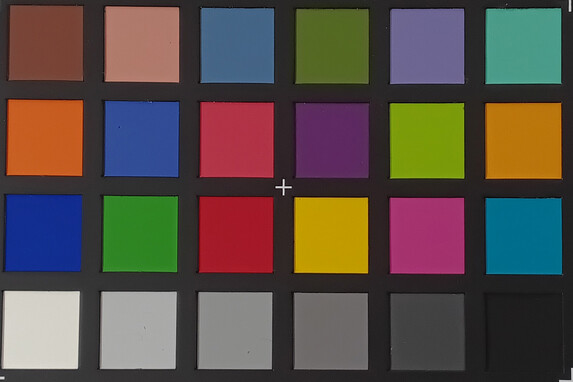

Accessories and warranty - Charger not included
For accessories, Samsung has only included a USB cable (Type C to C), a small tool to open the card slot, and documentation. If you want a case, you can get the optional Book Cover (RRP: €43, or around US$46) with adjustable angle. Samsung also doesn’t offer any screen protector for the Tab A9 despite the fact that no protective film is preinstalled on the 8.7-inch device out of the box.
Samsung provides a 24-month warranty on the budget tablet in Germany. You can also add the Care+ insurance package with a term of 12 to 24 months (RRP: starting from €24, or US$26). Warranty terms and conditions may vary depending on region.
Input devices and operation - Samsung Galaxy Tab A9 with Face unlock
The Tab A9’s capacitive touchscreen detects finger inputs without any perceptible delays – compatibility with the S Pen isn’t available. The TFT panel on board only supports a 60Hz refresh rate. As a result, animations and scrolling are less smooth and feel somewhat choppier than on a competing tablet capable of 90Hz, such as the Redmi Pad SE.
Biometric security is provided using face recognition via the front camera, but it uses a 2D method that is not secure. The unlocking process works reliably in good lighting conditions. The registration of face data is limited to one user. The tablet doesn’t have any fingerprint reader.
Display - Galaxy Tab A9 with an LCD panel
The Galaxy Tab A9’s screen measures 8.7 inch diagonally and has a resolution of 1,340 x 800 pixels, equivalent to a pixel density of 179 PPI. The TFT display thus doesn’t make contents look very sharp and isn’t going cause people who are really particular about screens to jump for joy.
The Samsung tablet cuts a better figure in the brightness department. In our measurement, the TFT panel hit a peak brightness off 486 cd/m² when producing a completely white image. The APL 18 measurement, which is more representative of day-to-day use, didn’t yield a considerable increase in brightness, but this is normal for a tablet with LCD technology.
We didn’t detect any screen flicker (PWM) on the Tab A9. That said, weaknesses typical of LCDs (shadows, uneven backlight at the edges) are relatively pronounced on the Samsung device. Even in daylight, effects of backlight bleed are already noticeable on a dark background (see video footage on the Tab A9).
| |||||||||||||||||||||||||
Brightness Distribution: 92 %
Center on Battery: 486 cd/m²
Contrast: 1389:1 (Black: 0.35 cd/m²)
ΔE ColorChecker Calman: 6.2 | ∀{0.5-29.43 Ø4.78}
ΔE Greyscale Calman: 5.7 | ∀{0.09-98 Ø5}
81.2% sRGB (Calman 2D)
Gamma: 2.12
CCT: 7911 K
| Samsung Galaxy Tab A9 LCD TFT, 1340x800, 8.7" | Lenovo Tab M8 (Gen 4) IPS, 1280x800, 8" | Nokia T10 IPS, 1280x800, 8" | Amazon Fire HD 8 2022 LCD, 1280x800, 8" | Samsung Galaxy Tab A8 2022 TFT-LCD, 1920x1200, 10.5" | |
|---|---|---|---|---|---|
| Screen | 16% | -16% | 1% | -30% | |
| Brightness middle (cd/m²) | 486 | 410 -16% | 446 -8% | 388 -20% | 368 -24% |
| Brightness (cd/m²) | 462 | 380 -18% | 429 -7% | 364 -21% | 346 -25% |
| Brightness Distribution (%) | 92 | 86 -7% | 94 2% | 90 -2% | 91 -1% |
| Black Level * (cd/m²) | 0.35 | 0.16 54% | 0.65 -86% | 0.36 -3% | 0.61 -74% |
| Contrast (:1) | 1389 | 2563 85% | 686 -51% | 1078 -22% | 603 -57% |
| Colorchecker dE 2000 * | 6.2 | 4.6 26% | 4.87 21% | 4.38 29% | 6.9 -11% |
| Colorchecker dE 2000 max. * | 10.4 | 9.03 13% | 9.85 5% | 10.7 -3% | 11.4 -10% |
| Greyscale dE 2000 * | 5.7 | 6.3 -11% | 5.7 -0% | 2.9 49% | 7.7 -35% |
| Gamma | 2.12 104% | 2.519 87% | 2.189 101% | 2.232 99% | 2.16 102% |
| CCT | 7911 82% | 7707 84% | 7781 84% | 6221 104% | 8547 76% |
* ... smaller is better
Screen Flickering / PWM (Pulse-Width Modulation)
| Screen flickering / PWM not detected | |||
In comparison: 53 % of all tested devices do not use PWM to dim the display. If PWM was detected, an average of 8108 (minimum: 5 - maximum: 343500) Hz was measured. | |||
We evaluated the colour calibration of the IPS panel using the CalMan analysis software. The Delta E values we measured for the sRGB gamut reveal an acceptable amount of deviation in both colours and greyscale reproduction for a tablet of this price. However, the Tab A9 doesn’t fall within the target level (Delta E < 3). Consequently, you will readily notice the difference between the displayed and reference colours, especially for white and red shades. The greyscale also carries a light blue tint, but we aren't really bothered by it.
The TFT panel’s black level of 0,35 cd/m² yields a great contrast ratio of around 1,400:1. The entry-level tablet is limited in terms of colour profiles. The Tab A9’s One UI only offers one colour mode out of the box. And you can’t even adjust the colour temperature.
Display Response Times
| ↔ Response Time Black to White | ||
|---|---|---|
| 34.71 ms ... rise ↗ and fall ↘ combined | ↗ 19.91 ms rise | |
| ↘ 14.8 ms fall | ||
| The screen shows slow response rates in our tests and will be unsatisfactory for gamers. In comparison, all tested devices range from 0.1 (minimum) to 240 (maximum) ms. » 92 % of all devices are better. This means that the measured response time is worse than the average of all tested devices (20.2 ms). | ||
| ↔ Response Time 50% Grey to 80% Grey | ||
| 52.61 ms ... rise ↗ and fall ↘ combined | ↗ 24.38 ms rise | |
| ↘ 28.23 ms fall | ||
| The screen shows slow response rates in our tests and will be unsatisfactory for gamers. In comparison, all tested devices range from 0.165 (minimum) to 636 (maximum) ms. » 89 % of all devices are better. This means that the measured response time is worse than the average of all tested devices (31.6 ms). | ||
Performance - Samsung tablet with Mediatek SoC
Under the hood of the Galaxy Tab A9 is a MediaTek Helio G99 with two Cortex-A76 performance cores. Measured against competing compact tablets, the chipset released in 2022 performed well in our CPU test, delivering great single- and multi-core scores in Geekbench. However, those interested in the Samsung tablet shouldn’t be misled by these results, because the performance is still be considered very low. In tablets with a 10-inch screen or larger, the Helio G99 is quite a common SoC in this price range.
| AImark - Score v3.x | |
| Average of class Tablet (138 - 55794, n=52, last 2 years) | |
| Samsung Galaxy Tab A9 | |
| Average Mediatek Helio G99 (842 - 1001, n=10) | |
| Lenovo Tab M8 (Gen 4) | |
| UL Procyon AI Inference for Android - Overall Score NNAPI | |
| Average of class Tablet (2597 - 76852, n=62, last 2 years) | |
| Average Mediatek Helio G99 (6323 - 9695, n=13) | |
| Samsung Galaxy Tab A9 | |
| Amazon Fire HD 8 2022 | |
| Antutu v10 - Total Score | |
| Average of class Tablet (164396 - 3475590, n=70, last 2 years) | |
| Average Mediatek Helio G99 (383511 - 422936, n=9) | |
| Samsung Galaxy Tab A9 | |
In 3DMark graphics tests, the performance differentials become even more obvious between the Mali-G57 MP2 in the Tab A9 and the GPUs in other competing tablets. There is sometimes a gap of more than 60% between the Samsung tablet and a Nokia T10 in the GFXBench measurements. Especially regarding on-screen scores, the Galaxy Tab had a great showing thanks to the low resolution.
GFXBench (DX / GLBenchmark) 2.7: T-Rex Onscreen | 1920x1080 T-Rex Offscreen
GFXBench 3.0: on screen Manhattan Onscreen OGL | 1920x1080 1080p Manhattan Offscreen
GFXBench 3.1: on screen Manhattan ES 3.1 Onscreen | 1920x1080 Manhattan ES 3.1 Offscreen
GFXBench: on screen Car Chase Onscreen | 1920x1080 Car Chase Offscreen | on screen Aztec Ruins High Tier Onscreen | 2560x1440 Aztec Ruins High Tier Offscreen | on screen Aztec Ruins Normal Tier Onscreen | 1920x1080 Aztec Ruins Normal Tier Offscreen | 3840x2160 4K Aztec Ruins High Tier Offscreen
| 3DMark / Wild Life Extreme Unlimited | |
| Samsung Galaxy Tab A9 | |
| Samsung Galaxy Tab A8 2022 | |
| Nokia T10 | |
| 3DMark / Wild Life Extreme | |
| Samsung Galaxy Tab A9 | |
| Samsung Galaxy Tab A8 2022 | |
| Nokia T10 | |
| 3DMark / Wild Life Unlimited Score | |
| Samsung Galaxy Tab A9 | |
| Samsung Galaxy Tab A8 2022 | |
| Nokia T10 | |
| 3DMark / Wild Life Score | |
| Samsung Galaxy Tab A9 | |
| Samsung Galaxy Tab A8 2022 | |
| Nokia T10 | |
| Amazon Fire HD 8 2022 | |
| 3DMark / Sling Shot Extreme (ES 3.1) Unlimited | |
| Samsung Galaxy Tab A9 | |
| Samsung Galaxy Tab A8 2022 | |
| Nokia T10 | |
| Amazon Fire HD 8 2022 | |
| 3DMark / Sling Shot Extreme (ES 3.1) Unlimited Graphics | |
| Samsung Galaxy Tab A9 | |
| Samsung Galaxy Tab A8 2022 | |
| Nokia T10 | |
| Amazon Fire HD 8 2022 | |
| 3DMark / Sling Shot Extreme (ES 3.1) Unlimited Physics | |
| Samsung Galaxy Tab A9 | |
| Samsung Galaxy Tab A8 2022 | |
| Nokia T10 | |
| Amazon Fire HD 8 2022 | |
| GFXBench (DX / GLBenchmark) 2.7 / T-Rex Onscreen | |
| Samsung Galaxy Tab A9 | |
| Amazon Fire HD 8 2022 | |
| Samsung Galaxy Tab A8 2022 | |
| Lenovo Tab M8 (Gen 4) | |
| GFXBench (DX / GLBenchmark) 2.7 / T-Rex Offscreen | |
| Samsung Galaxy Tab A9 | |
| Samsung Galaxy Tab A8 2022 | |
| Amazon Fire HD 8 2022 | |
| Lenovo Tab M8 (Gen 4) | |
| GFXBench 3.0 / Manhattan Onscreen OGL | |
| Samsung Galaxy Tab A9 | |
| Amazon Fire HD 8 2022 | |
| Samsung Galaxy Tab A8 2022 | |
| Lenovo Tab M8 (Gen 4) | |
| GFXBench 3.0 / 1080p Manhattan Offscreen | |
| Samsung Galaxy Tab A9 | |
| Samsung Galaxy Tab A8 2022 | |
| Amazon Fire HD 8 2022 | |
| Lenovo Tab M8 (Gen 4) | |
| GFXBench 3.1 / Manhattan ES 3.1 Onscreen | |
| Samsung Galaxy Tab A9 | |
| Amazon Fire HD 8 2022 | |
| Samsung Galaxy Tab A8 2022 | |
| Lenovo Tab M8 (Gen 4) | |
| GFXBench 3.1 / Manhattan ES 3.1 Offscreen | |
| Samsung Galaxy Tab A9 | |
| Samsung Galaxy Tab A8 2022 | |
| Amazon Fire HD 8 2022 | |
| Lenovo Tab M8 (Gen 4) | |
| GFXBench / Car Chase Onscreen | |
| Samsung Galaxy Tab A9 | |
| Amazon Fire HD 8 2022 | |
| Samsung Galaxy Tab A8 2022 | |
| Lenovo Tab M8 (Gen 4) | |
| GFXBench / Car Chase Offscreen | |
| Samsung Galaxy Tab A9 | |
| Samsung Galaxy Tab A8 2022 | |
| Amazon Fire HD 8 2022 | |
| Lenovo Tab M8 (Gen 4) | |
| GFXBench / Aztec Ruins High Tier Onscreen | |
| Samsung Galaxy Tab A9 | |
| Nokia T10 | |
| Amazon Fire HD 8 2022 | |
| Samsung Galaxy Tab A8 2022 | |
| Lenovo Tab M8 (Gen 4) | |
| GFXBench / Aztec Ruins High Tier Offscreen | |
| Samsung Galaxy Tab A9 | |
| Amazon Fire HD 8 2022 | |
| Samsung Galaxy Tab A8 2022 | |
| Nokia T10 | |
| Lenovo Tab M8 (Gen 4) | |
| GFXBench / Aztec Ruins Normal Tier Onscreen | |
| Samsung Galaxy Tab A9 | |
| Amazon Fire HD 8 2022 | |
| Nokia T10 | |
| Samsung Galaxy Tab A8 2022 | |
| Lenovo Tab M8 (Gen 4) | |
| GFXBench / Aztec Ruins Normal Tier Offscreen | |
| Samsung Galaxy Tab A9 | |
| Samsung Galaxy Tab A8 2022 | |
| Amazon Fire HD 8 2022 | |
| Nokia T10 | |
| Lenovo Tab M8 (Gen 4) | |
| GFXBench / 4K Aztec Ruins High Tier Offscreen | |
| Samsung Galaxy Tab A9 | |
| Nokia T10 | |
| Lenovo Tab M8 (Gen 4) | |
The Tab A9 delivers solid browser speeds, but system hang-ups can creep in frequently during day-to-day use. Moreover, complex page contents may take a long time to load. The Samsung device once again came out top in our comparison during the browser benchmarks.
| Jetstream 2 - 2.0 Total Score | |
| Average of class Tablet (22.3 - 395, n=68, last 2 years) | |
| Average Mediatek Helio G99 (46.9 - 92.8, n=15) | |
| Samsung Galaxy Tab A9 (Chrome 212) | |
| Samsung Galaxy Tab A8 2022 (Chrome 94.0.4606.85) | |
| Amazon Fire HD 8 2022 (Silk Browser 106) | |
| Lenovo Tab M8 (Gen 4) (Chrome 112) | |
| WebXPRT 4 - Overall | |
| Average of class Tablet (26 - 376, n=71, last 2 years) | |
| Samsung Galaxy Tab A9 (Chrome 212) | |
| Average Mediatek Helio G99 (39 - 89, n=13) | |
| Amazon Fire HD 8 2022 (Silk Browser 106) | |
| Lenovo Tab M8 (Gen 4) (Chrome 112) | |
| WebXPRT 3 - Overall | |
| Average of class Tablet (39 - 480, n=25, last 2 years) | |
| Samsung Galaxy Tab A9 (Chrome 212) | |
| Average Mediatek Helio G99 (80 - 112, n=8) | |
| Samsung Galaxy Tab A8 2022 (Chrome 94.0.4606.85) | |
| Lenovo Tab M8 (Gen 4) (Chrome 112) | |
| Amazon Fire HD 8 2022 (Silk Browser 106) | |
| Speedometer 2.0 - Result 2.0 | |
| Average of class Tablet (2.59 - 790, n=55, last 2 years) | |
| Samsung Galaxy Tab A9 (Chrome 212) | |
| Average Mediatek Helio G99 (24.1 - 90.1, n=12) | |
| Samsung Galaxy Tab A8 2022 (Chrome 94.0.4606.85) | |
| Amazon Fire HD 8 2022 (Silk Browser 106) | |
| Lenovo Tab M8 (Gen 4) (Chome 112) | |
| Octane V2 - Total Score | |
| Average of class Tablet (763 - 138481, n=95, last 2 years) | |
| Samsung Galaxy Tab A9 (Chrome 212) | |
| Average Mediatek Helio G99 (17228 - 26476, n=24) | |
| Samsung Galaxy Tab A8 2022 (Chrome 94.0.4606.85) | |
| Nokia T10 (Chrome 109) | |
| Amazon Fire HD 8 2022 (Silk Browser 106) | |
| Lenovo Tab M8 (Gen 4) (Chrome 112) | |
| Mozilla Kraken 1.1 - Total | |
| Amazon Fire HD 8 2022 (Silk Browser 106) | |
| Lenovo Tab M8 (Gen 4) (Chrome 112) | |
| Samsung Galaxy Tab A8 2022 (Chrome 94.0.4606.85) | |
| Average of class Tablet (243 - 27101, n=80, last 2 years) | |
| Average Mediatek Helio G99 (1600 - 2444, n=13) | |
| Samsung Galaxy Tab A9 (Chrome 212) | |
* ... smaller is better
The Tab A9’s internal storage is really fast for a tablet in this price bracket. Though Samsung hasn’t provided the exact specifications, based on AndroBench scores, it likely uses the UFS 2.2 standard. The eMMC flash in the competitors is the slowest storage technology currently used in smartphones and tablets.
| Samsung Galaxy Tab A9 | Lenovo Tab M8 (Gen 4) | Nokia T10 | Amazon Fire HD 8 2022 | Samsung Galaxy Tab A8 2022 | Average 64 GB UFS 2.2 Flash | Average of class Tablet | |
|---|---|---|---|---|---|---|---|
| AndroBench 3-5 | -67% | -57% | -76% | -66% | 2% | 121% | |
| Sequential Read 256KB (MB/s) | 916.45 | 269.6 -71% | 273.5 -70% | 270.37 -70% | 255.1 -72% | 770 ? -16% | 1795 ? 96% |
| Sequential Write 256KB (MB/s) | 398.32 | 190.5 -52% | 191.5 -52% | 113.44 -72% | 101.1 -75% | 399 ? 0% | 1342 ? 237% |
| Random Read 4KB (MB/s) | 182.74 | 67 -63% | 71.4 -61% | 39.46 -78% | 68.3 -63% | 156.6 ? -14% | 246 ? 35% |
| Random Write 4KB (MB/s) | 128.92 | 23.9 -81% | 71.5 -45% | 19.81 -85% | 57.5 -55% | 177.7 ? 38% | 280 ? 117% |
Gaming - Samsung Galaxy Tab A9 can do 60 fps
To be able to better evaluate the graphics performance of the Mali-G57 MP2 in everyday use, we took a closer look at two games from the PlayStore with the help of the GameBench app. Really demanding games, such as Genshin Impact, can’t run smoothly on the Galaxy Tab A9. We measured an average frame rate of 37 fps at low graphics settings, though with severe frame drops. Once the settings are bumped up, we got an average of 22 fps with lots of visual artefacts.
Things look a little different with lighter gaming. The Tab A9 delivered 30 fps in PUBG Mobile at HD settings, but the highest graphics settings (UHD) can’t be selected on the entry-level device. The same is true for the optional 90 fps mode. Nevertheless, 40 fps is possible on the A9 at the lowest settings.
Emissions - Hardly any throttling
Temperature
The Galaxy Tab A9’s chassis hardly gets warm in everyday use. Even under heavy load, such as during Burnout Benchmark, our measurements yielded an average temperature of just 33°C (91.4°F). We used 3Dmark’s battery test to assess the cooling performance of the tablet’s internals. The Wild Life Stress Test ran effortlessly with a stability of over 98%. Consequently, we weren’t able bring the Tab A9 to any significant throttling even under sustained load.
(+) The maximum temperature on the upper side is 36.1 °C / 97 F, compared to the average of 33.7 °C / 93 F, ranging from 20.7 to 53.2 °C for the class Tablet.
(+) The bottom heats up to a maximum of 35.5 °C / 96 F, compared to the average of 33.2 °C / 92 F
(+) In idle usage, the average temperature for the upper side is 28 °C / 82 F, compared to the device average of 30 °C / 86 F.
3DMark Wild Life Stress Test
| 3DMark | |
| Wild Life Extreme Stress Test | |
| Samsung Galaxy Tab A8 2022 | |
| Samsung Galaxy Tab A9 | |
| Wild Life Stress Test Stability | |
| Samsung Galaxy Tab A8 2022 | |
| Samsung Galaxy Tab A9 | |
| Nokia T10 | |
Speakers
The Galaxy Tab A9 is equipped with two speakers rated at one watt each. The Dolby Atmos-certified system delivers passable stereo audio and also gets sufficiently loud at 86 dB. Highs are fairly linear on the Samsung tablet, but playing back pink noise revealed a sharply ascending trend in the mids. Bass is non-existent in the sound profile.
You will get better playback quality by using the 3.5 mm audio jack or Bluetooth to connect to wireless speakers or headphones. Based on our measurement, the noise level from the audio output isn’t perfect, but is highly satisfactory with an SNR of 78.5 dBFS – especially considering the price. In terms of Bluetooth codecs, the Galaxy tablet only supports SBC, AAC, aptX, aptX HD and LDAC. This means, besides the obligatory SBC support, you should be able to find an appropriate codec for most headphones. Even so, the device doesn’t really offer a wide range of codecs.
Samsung Galaxy Tab A9 audio analysis
(+) | speakers can play relatively loud (86.6 dB)
Bass 100 - 315 Hz
(-) | nearly no bass - on average 26.5% lower than median
(±) | linearity of bass is average (10.1% delta to prev. frequency)
Mids 400 - 2000 Hz
(±) | higher mids - on average 6.9% higher than median
(+) | mids are linear (6.8% delta to prev. frequency)
Highs 2 - 16 kHz
(±) | higher highs - on average 7.2% higher than median
(+) | highs are linear (3.5% delta to prev. frequency)
Overall 100 - 16.000 Hz
(±) | linearity of overall sound is average (24.4% difference to median)
Compared to same class
» 75% of all tested devices in this class were better, 7% similar, 18% worse
» The best had a delta of 7%, average was 20%, worst was 129%
Compared to all devices tested
» 73% of all tested devices were better, 6% similar, 21% worse
» The best had a delta of 4%, average was 24%, worst was 134%
Samsung Galaxy Tab A8 2022 audio analysis
(+) | speakers can play relatively loud (87.4 dB)
Bass 100 - 315 Hz
(-) | nearly no bass - on average 28.8% lower than median
(±) | linearity of bass is average (12.2% delta to prev. frequency)
Mids 400 - 2000 Hz
(+) | balanced mids - only 4.3% away from median
(+) | mids are linear (5.4% delta to prev. frequency)
Highs 2 - 16 kHz
(+) | balanced highs - only 4.7% away from median
(+) | highs are linear (6.7% delta to prev. frequency)
Overall 100 - 16.000 Hz
(±) | linearity of overall sound is average (19.9% difference to median)
Compared to same class
» 56% of all tested devices in this class were better, 8% similar, 37% worse
» The best had a delta of 7%, average was 20%, worst was 129%
Compared to all devices tested
» 50% of all tested devices were better, 7% similar, 42% worse
» The best had a delta of 4%, average was 24%, worst was 134%
Power management - Galaxy Tab A9 gets little wrong
Power consumption
The Galaxy Tab 9 boasts a 5,100 mAh battery that can charge at up to 15 watts via the USB-C interface. We were able to fully recharge the tablet using a power bank (PD 3.0, max. 100 watts) in roughly 2.5 hours.
The tablet's power usage is varied at idle, ranging from a very low 0.7 watts to a rather notable 3 watts. Under load, the Tab A9 consumes more power than a Lenovo Tab M8. That said, it’s not fully possible to draw a direct comparison with slightly older reviews because we recently switch to another benchmark tool (Burnout Benchmark) for our load tests.
| Off / Standby | |
| Idle | |
| Load |
|
Key:
min: | |
| Samsung Galaxy Tab A9 5100 mAh | Lenovo Tab M8 (Gen 4) 5100 mAh | Amazon Fire HD 8 2022 4850 mAh | Samsung Galaxy Tab A8 2022 7040 mAh | |
|---|---|---|---|---|
| Power Consumption | 5% | 28% | -38% | |
| Idle Minimum * (Watt) | 0.7 | 1.7 -143% | 1.2 -71% | 1.19 -70% |
| Idle Average * (Watt) | 2.94 | 1.9 35% | 1.4 52% | 4.63 -57% |
| Idle Maximum * (Watt) | 3.03 | 2.4 21% | 1.7 44% | 4.68 -54% |
| Load Average * (Watt) | 7.49 | 3 60% | 2.5 67% | 7.27 3% |
| Load Maximum * (Watt) | 8.02 | 3.9 51% | 4.3 46% | 9.17 -14% |
* ... smaller is better
Power consumption: Geekbench (150 cd/m²)
Power consumption: GFXBench (150 cd/m²)
Battery life
In our realistic Wi-Fi web surfing test, the Galaxy Tab A9 gave up only after running continuously for almost 14 hours with display brightness adjusted to 150 cd/m². The Samsung device also had an excellent showing in our video test, lasting over 19 hours.
Even with intensive use, you are easily able to get through an entire day with the Tab A9.
| Samsung Galaxy Tab A9 5100 mAh | Lenovo Tab M8 (Gen 4) 5100 mAh | Nokia T10 5250 mAh | Amazon Fire HD 8 2022 4850 mAh | Samsung Galaxy Tab A8 2022 7040 mAh | |
|---|---|---|---|---|---|
| Battery runtime | -2% | 15% | 9% | -16% | |
| Reader / Idle (h) | 32.2 | 37.1 15% | 32.9 2% | ||
| H.264 (h) | 19.3 | 16.6 -14% | 13.7 -29% | ||
| WiFi v1.3 (h) | 14.3 | 15.5 8% | 16.4 15% | 15.6 9% | 11.3 -21% |
| Load (h) | 4.6 | 3.8 -17% | 3.8 -17% |
Pros
Cons
Verdict on the Samsung Galaxy Tab A9
The Galaxy Tab A9 stands out from the entry-level crowd through its lightweight and compact design, meaning there is a very limited pool of alternatives that can compete with the device. The Lenovo Tab M8 is an example of a worthy competitor. However, this entry-level tablet from the Chinese manufacturer still uses a weaker SoC than the Helio G99 in the Galaxy Tab A9.
With the Galaxy Tab 9, Samsung has created a solid overall package in a wieldy form factor.
One major advantage of the Galaxy Tab A9 is the fairly long update support. Samsung promises to provide four years of security updates and (in theory) patches on a quarterly basis. Its affordable price notwithstanding, we would have liked to see more customisation for the display’s colour calibration in the One UI – much like what you get in mid-range Samsung offerings. In addition, the max refresh rate of 60Hz and the lack of a fingerprint sensor also negatively impact everyday use.
Unfortunately, the Tab A9 also doesn’t support the Samsung’s own S Pen. As a result, it is less suitable for users looking to get a compact tablet for writing memos and taking notes. Those who are going to miss having stylus functionality on the Samsung tablet can look at the Lenovo Tab M10 Plus for a possible alternative in the entry-level segment, though this comes at the cost of a compact design.
Price and availability
The Samsung Galaxy Tab A9 is available with a starting RRP of €179 (US$159). You may even be able to get it for less from online retailers like Amazon.
Samsung Galaxy Tab A9
- 02/08/2024 v7 (old)
Marcus Herbrich
Transparency
The selection of devices to be reviewed is made by our editorial team. The test sample was freely purchased by the author at his/her own expense. The lender had no influence on this review, nor did the manufacturer receive a copy of this review before publication. There was no obligation to publish this review. As an independent media company, Notebookcheck is not subjected to the authority of manufacturers, retailers or publishers.
This is how Notebookcheck is testing
Every year, Notebookcheck independently reviews hundreds of laptops and smartphones using standardized procedures to ensure that all results are comparable. We have continuously developed our test methods for around 20 years and set industry standards in the process. In our test labs, high-quality measuring equipment is utilized by experienced technicians and editors. These tests involve a multi-stage validation process. Our complex rating system is based on hundreds of well-founded measurements and benchmarks, which maintains objectivity. Further information on our test methods can be found here.




